SHOP DRY EYE CARE TODAY!
Use code VISIONARYEYE20 at checkout for 20% off!
Regular eye exams are a cornerstone of maintaining not just good vision but also overall health. At Visionary Eye Center in Reno, we understand that eye health is a critical aspect of your overall wellness. This article aims to shed light on why regular eye exams are essential for people of all ages and how they can help you make informed decisions about your eye care.
It's often said that prevention is better than cure, and this is particularly true for eye health. Many eye conditions, such as glaucoma and macular degeneration, develop silently, showing no noticeable symptoms in their initial stages. Regular eye exams are crucial in catching these conditions early. At Visionary Eye Center, our thorough eye exams are designed to identify such issues before they progress and cause irreversible damage. Early detection means early treatment, significantly improving the chances of preserving your vision and health.
Understanding the silent nature of many eye diseases underscores the importance of regular check-ups. Conditions like glaucoma, often referred to as the “silent thief of sight,” can progress unnoticed. By the time symptoms become apparent, significant vision loss may have already occurred. Routine eye exams can detect these conditions when they are most treatable.
Our eyesight changes as we age, making regular eye exams essential. These exams ensure that any changes in your vision are identified promptly. Whether you need a new prescription for your glasses or adjustments to your current eyewear, regular eye checks help keep your vision sharp and clear. At Visionary Eye Center, we can guide you through these changes, ensuring your vision needs are met at every stage of life.
As you age, you might notice changes in your vision. Maybe you're struggling to read fine print, or distant objects aren't as clear as they used to be. Regular eye exams allow us to track these changes and adjust your prescription, ensuring optimal vision and comfort.
Did you know that an eye exam can reveal much more than just eye-related issues? Your eyes are windows to your overall health, providing clues about systemic diseases like diabetes or hypertension. The blood vessels and nerves in your eyes can show signs of these conditions, often before other symptoms appear. Regular eye exams at Visionary Eye Center can therefore play a critical role in your overall health management.
The comprehensive eye exams at Visionary Eye Center can detect signs of diabetes, high blood pressure, and even cholesterol issues. This makes eye exams an integral part of your healthcare routine, offering insights that go beyond vision care.
For children, vision is closely linked to learning and social development. Regular eye exams are vital in ensuring that children have the visual tools they need to succeed in school and life. Vision problems can significantly impact a child’s academic performance, so catching and correcting these issues early is crucial.
Eye exams for children at Visionary Eye Center are about more than just checking for glasses. They're about ensuring that each child has a solid foundation for development and learning. Regular exams can help identify issues that might impede a child’s ability to read, learn, and engage in activities, setting them up for success from a young age.
We encourage you to prioritize your eye health by scheduling regular eye exams at Visionary Eye Center. These exams are a critical step in maintaining not only your vision but also your overall health. If it's time for an updated prescription or you're interested in exploring new eyewear options, our team is here to assist you. Remember, taking care of your eyes is taking care of your future.
Your eyes are windows to the world, but they can also be sources of discomfort and concern. In Reno, where the climate and lifestyle can impact eye health, understanding how to manage common eye problems is crucial. Visionary Eye Center, a leading group of Reno eye doctors, offers practical advice for dealing with issues like dry eyes, red eyes, and eye infections.
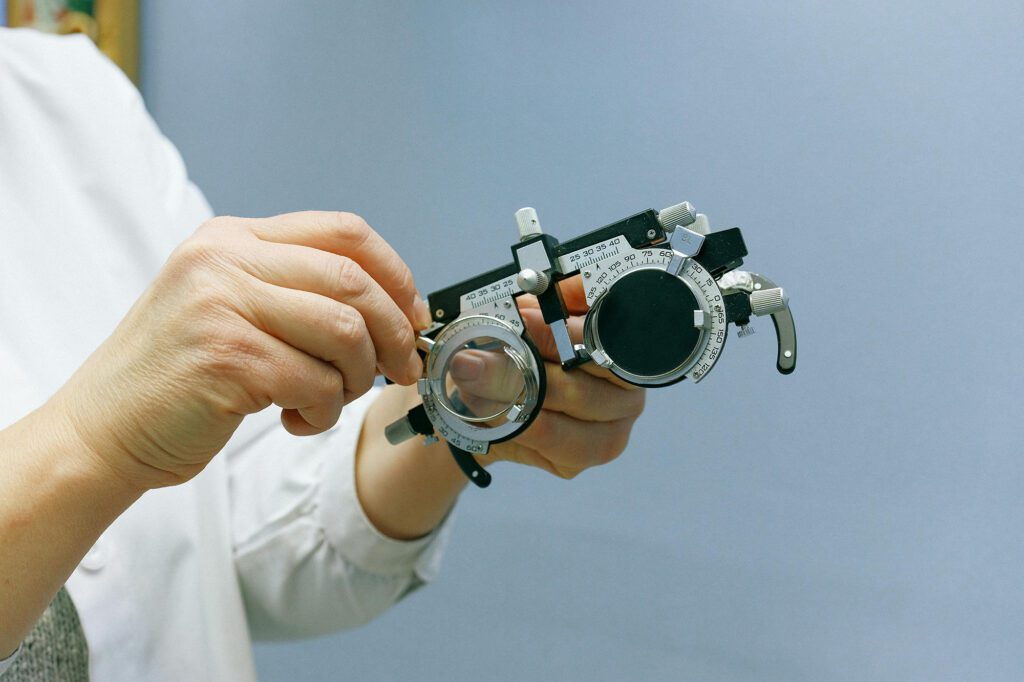
Dry eyes can result from environmental factors like Reno's dry air, certain medications, age-related changes, and prolonged contact lens use. Recognizable by a gritty feeling, burning sensation, and temporary blurred vision, dry eyes are more than just an annoyance.
Combatting dry eyes involves a combination of using lubricating eye drops and avoiding conditions that exacerbate the issue. Regular breaks from screen time, staying hydrated, and using a humidifier can also help.

Red eyes can stem from allergies, eye strain, or more serious conditions like infections. Keeping your hands clean, avoiding eye-straining activities, and using appropriate eye protection are key preventative steps.
For temporary relief, cool compresses and proper eyelid hygiene can be effective. However, persistent red eyes may indicate an underlying issue that requires professional attention.
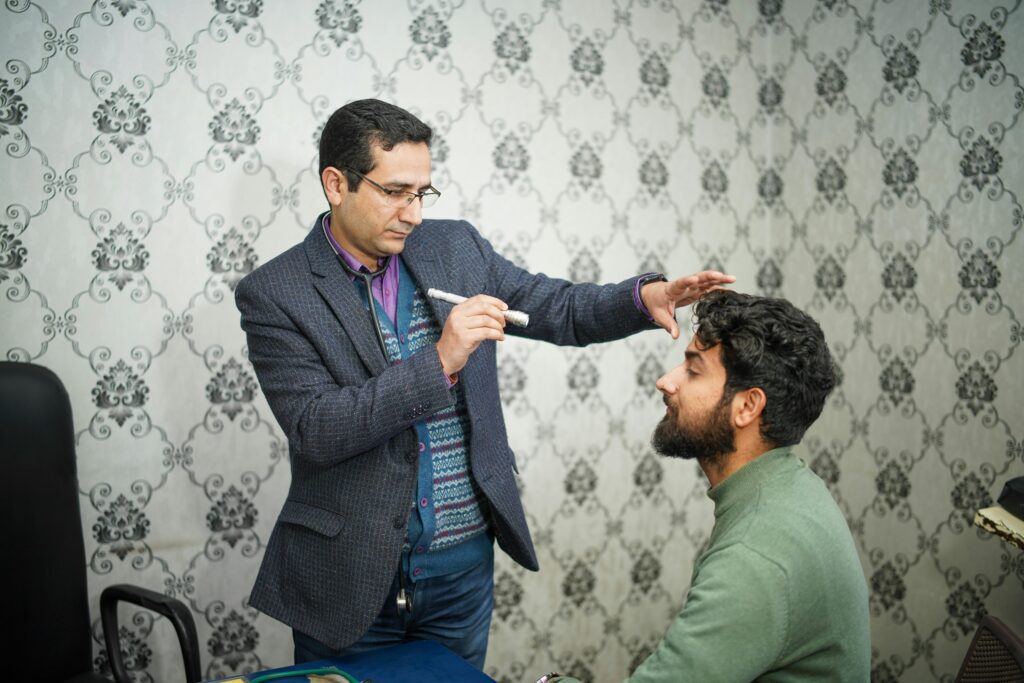
Eye infections, caused by bacteria, viruses, or fungi, often present symptoms like redness, pain, discharge, and light sensitivity. Treatments vary but typically include medicated eye drops or ointments. For contact lens wearers, maintaining good hygiene is crucial for prevention.
Persistent, worsening, or severe symptoms warrant a visit to an eye care professional. Delaying proper care can lead to complications and should be avoided.
Persistent or severe eye problems should prompt a visit to an eye care professional. Self-diagnosis and treatment can delay effective care and potentially lead to complications. Visionary Eye Center in Reno offers expert care for various eye conditions and can provide tailored solutions for your eye health needs.
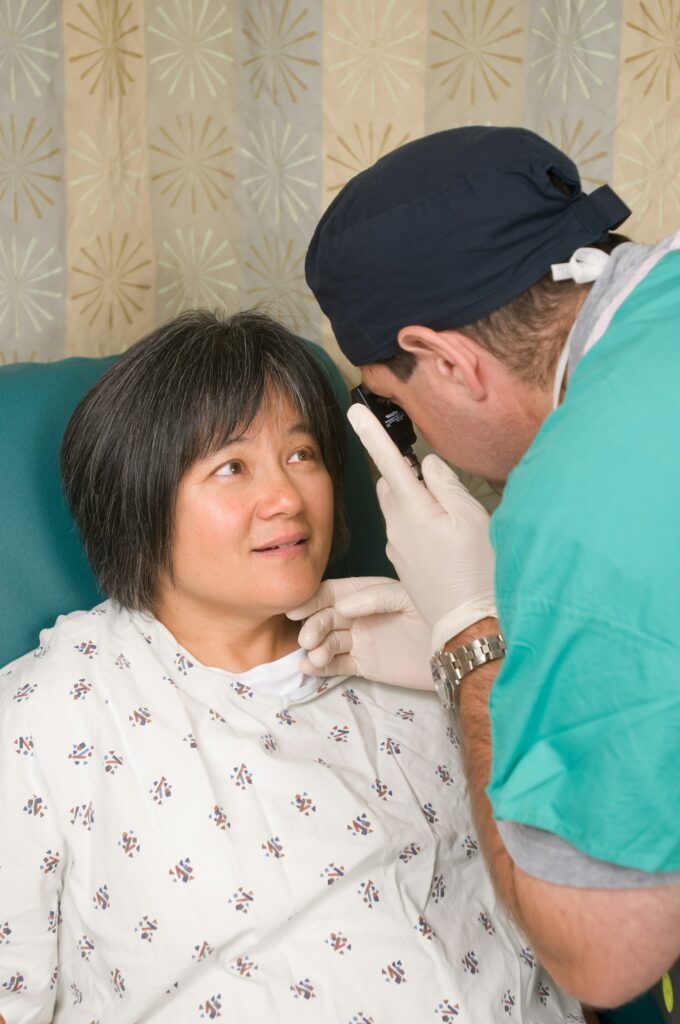
When it comes to vision correction in Reno, LASIK surgery is a widely known option. However, it's not the only path to clearer vision. For those who may not be ideal candidates for LASIK, there are several effective alternatives. Visionary Eye Center in Reno offers insights into choosing the right LASIK alternative based on individual vision needs.
ICL, a suitable option for individuals with thin corneas or chronic dry eye, involves placing a thin lens within the eye. This 20-minute procedure per eye is known for minimal side effects, although recovery can span several months.
ICL is not just a short-term solution. It offers long-lasting vision correction, making it a worthwhile consideration for those ineligible for LASIK.
Photorefractive Keratectomy (PRK) reshapes the cornea by removing its outer layers. It's a preferred choice for those with thin corneas who can't undergo LASIK. While the recovery from PRK can be longer and more uncomfortable, it's highly effective, especially for athletes or pilots.
The post-PRK recovery period may involve more discomfort compared to LASIK, but the outcomes in terms of vision correction are commendable.
Refractive Lens Exchange (RLE) replaces the eye's natural lens with a synthetic one. It's particularly beneficial for those over 40, addressing presbyopia and early cataracts. RLE suits individuals with strong prescriptions not correctable by LASIK.
RLE not only corrects vision but also prevents the future development of cataracts, offering a dual benefit for aging eyes.
LASEK surgery, similar to LASIK and PRK, is recommended for people with thin or flat corneas. The recovery period can be prolonged, with potential side effects like dry eyes and light sensitivity. Choosing between LASIK, PRK, and LASEK depends on individual eye structure, lifestyle, and vision goals.
After exploring these alternatives, it's crucial to consult with eye care professionals to determine the most suitable option. At Visionary Eye Center, we assess your specific vision correction needs to recommend the best procedure.
We invite you to visit Visionary Eye Center in Reno to explore these LASIK alternatives. Our team is dedicated to providing personalized care, ensuring you receive the best treatment for your unique vision needs.
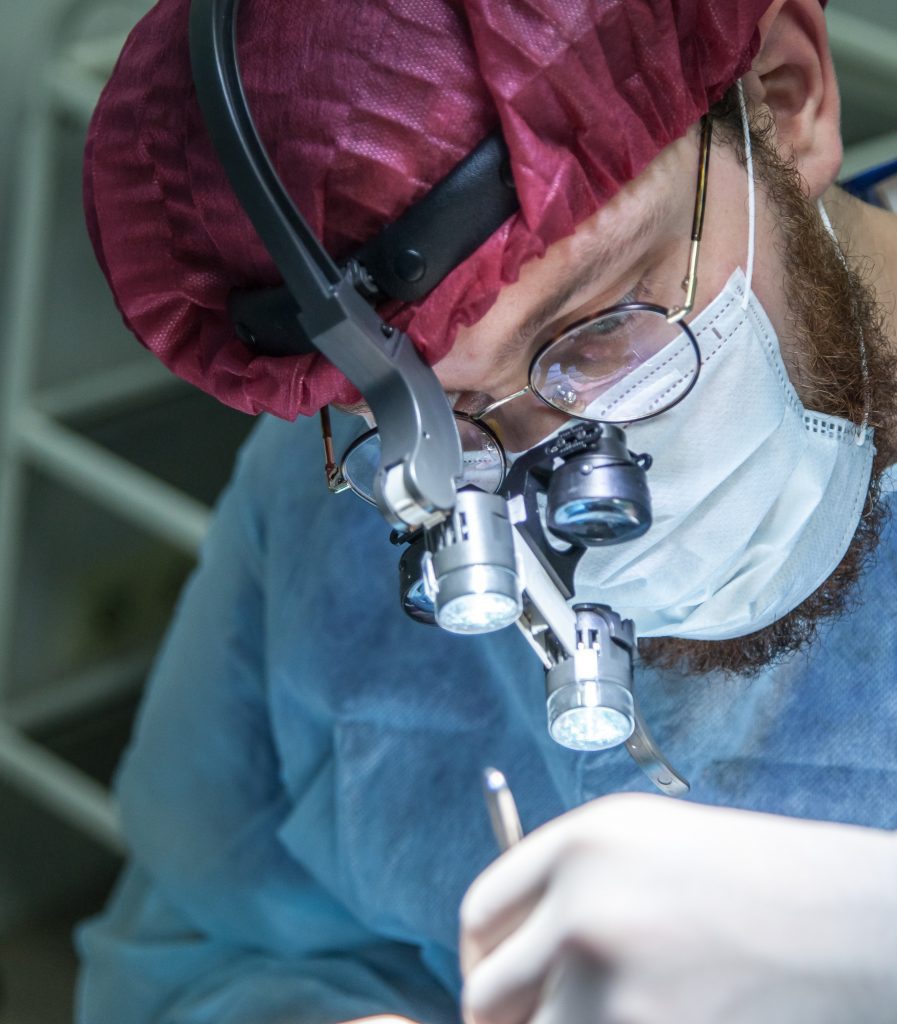
Imagine a world where you can wake up to clear, crisp vision without reaching for your glasses or stumbling to insert contact lenses. This is the world of laser eye treatments, a revolutionary set of procedures that can transform the way you see — quite literally. Let me, Dr. Bolenbaker from the Visionary Eye Center, be your guide on this transformative journey.
To comprehend where we stand today, let's cast a brief glance at the history of refractive surgery. The revolutionary shift occurred with the emergence of PRK and LASIK, which swiftly replaced radial keratotomy, enhancing safety, predictability, and stability in vision correction.
Both LASIK and PRK utilize the precision of a laser to reshape the cornea. But, like two paths diverging in a forest, each carries its distinct approach and advantages. LASIK crafts a flap on the cornea that's folded back during surgery and repositioned afterward, speeding up the recovery process. PRK, on the other hand, works directly on the cornea, making it particularly beneficial for those with high prescriptions or thinner corneas.
LASEK brings together the advantages of both PRK and LASIK. This procedure delicately lifts the epithelium, treats the cornea, and then repositions the epithelium, thereby minimizing post-operative dryness. This fusion of LASIK and PRK methodologies offers a balanced solution for those seeking comfort and clarity.
What if you could enjoy the benefits of refractive surgery but retain the option to reverse the procedure if needed? That's exactly what ICL offers. By placing a small lens between the iris and the natural lens of the eye, this method allows for significant vision correction with the advantage of reversibility. This can be particularly appealing for patients with high prescription levels or those who may need to adjust their vision correction in the future.
With age comes wisdom, but also presbyopia, the natural loss of near vision that occurs typically after 40. However, procedures like the corneal inlay or refractive lens exchange offer effective solutions. The Kamra or Raindrop inlays create a pinhole effect, extending the depth of focus of the eye, thereby restoring near vision. Alternatively, a refractive lens exchange replaces the eye's natural lens with an intraocular lens, allowing for customized vision correction.
For those hesitant about surgery, orthokeratology offers an innovative alternative. By wearing specially designed contact lenses overnight, the cornea is gently reshaped, enabling clear daytime vision without the need for glasses or contacts. This non-surgical approach can be a game-changer for those who desire vision correction but are apprehensive about surgical procedures.
Nestled in the vibrant city of Reno, Nevada, Visionary Eye Center stands as a beacon of excellence in the realm of laser eye treatments. Known for its progressive spirit and dedication to cutting-edge medical advancements, Reno offers an ideal backdrop for those seeking the highest quality of vision care.

At Visionary Eye Center, we are dedicated to providing exceptional care and unmatched expertise in laser eye treatments. Our team, led by the esteemed Dr. Bolenbaker, consists of experienced professionals who are passionate about transforming your vision and enhancing your quality of life. With a commitment to excellence, we ensure that our patients receive the highest standard of care throughout their treatment journey.
We understand that your vision needs are as unique as you are. That's why we take pride in offering personalized treatment plans tailored to your specific needs and visual goals. We believe that clear vision is not just a luxury, but an essential asset that has the power to enhance every aspect of your life.
Whether you're considering LASIK, PRK, ICL, or any other laser eye treatment, we invite you to embark on your personalized journey to clear vision at Visionary Eye Center in Reno. From the moment you step through our doors, our friendly and knowledgeable staff will be by your side, providing guidance, answering your questions, and addressing any concerns you may have. We are dedicated to ensuring that you have a comprehensive understanding of the available options, empowering you to make informed decisions about your vision.
Your vision is our top priority, and we are committed to helping you achieve the clear, vibrant world you deserve. Contact our Reno eye clinic today to schedule a consultation and take the first step towards transforming your vision. Let us be your partner in this exciting journey towards a brighter future.
In the heart of Reno, Visionary Eye Center offers a pathway to a future where the world is crisp, vibrant, and free from the constraints of glasses or contacts. Unlock the potential of your vision and experience the transformative impact of laser eye treatments. Contact our Reno eye clinic today, and let us help you embark on a journey towards a clearer, more vibrant world. Your vision, empowered.
Today, we aim to unravel the artistry and thoughtfulness that goes into selecting the perfect frame shape to flatter your unique facial structure and personal style. Here at Visionary Eye Center, we hold firm to the belief that eyewear goes far beyond mere necessity, especially when it comes to Reno family eye care. It's a powerful tool to express one's personality, individuality, and style. Therefore, the importance of choosing a frame shape that complements your facial features and aligns with your fashion sensibilities with a Reno optometrist cannot be overstated.
To embark on this path, the first pivotal step is gaining a sound understanding of your face shape. Much like an artist who must comprehend the shape of their canvas before they can create a masterpiece, the shape of your face plays an integral role in determining which frame style will be the most flattering and suitable for you. Recognizing this is the cornerstone of making an informed and stylish decision when it comes to your eyewear.
There are five primary face shapes that most of us fall into, each with corresponding frame styles that accentuate their unique characteristics. Before we dive into the ocean of fashionable frames that await, let's take a moment to outline these five main face shapes. This crucial knowledge will serve as your compass, guiding you towards the frame styles that best harmonize with your natural features. We'll cover each face shape in detail, explaining their distinguishing traits and suggesting frame styles that lend themselves to each. This combination of understanding your face shape and recognizing the frame styles that correspond is the first step in your journey towards finding the perfect eyewear.

An oval-shaped face, marked by a forehead that is slightly wider than the chin, and characterized by high cheekbones, is considered the epitome of versatility in terms of frame compatibility. This face shape can pull off a myriad of frame styles with elegance. However, it is recommended to sidestep frames that are excessively oversized or bear harsh angular features. Round, square, and rectangular frames with softer edges enhance the symmetry of an oval face, accentuating its naturally balanced proportions without making it appear overly elongated or round.
A round face is characterized by its soft, curved lines, where the width and length of the face present in almost equal dimensions, creating a circular appearance. To counterbalance the roundness and bring about a sense of definition and elongation to your face, opt for angular and narrow frames. Frames bearing rectangular or square designs can provide the necessary contrast to the face's soft lines, imparting a striking balance and enhancing the facial features.
A square face is distinguishable by its strong, angular features, with a prominent jawline and broad forehead that make the face's width and length nearly equal. Frames that are round or oval can effectively soften the face's sharpness, injecting an element of balance to the pronounced angular features. Additionally, cat-eye frames and styles embodying curves can complement square faces by providing a pleasant contrast to the straight lines, giving an appealing and harmonious look.
A heart-shaped face, often recognized by its broad forehead and tapering towards a narrow chin, resembles the shape of a classic heart. This face shape can be balanced out by frames that are wider at the bottom, gently drawing attention away from the forehead. Subtle cat-eye shapes work wonders on this face shape, adding a flattering emphasis on the lower part of the face. Round and oval frames with thin rims can also harmoniously balance the wider forehead and narrower chin typical of heart-shaped faces.
A diamond-shaped face, marked by prominent cheekbones and a narrow forehead and chin, is uniquely attractive and somewhat rare. Frames with gentle curves can help to soften the angularity of this face shape and add balance, enhancing the overall facial symmetry. For this face shape, frames with wider temples can create an illusion of a broader forehead, adding balance to the face's dimensions. Designs such as oval frames and cat-eye styles accentuate the cheekbones and contour the face beautifully, resulting in a flattering and stylish look.
Now that we've explored the various face shapes and their matching frame styles, it's time to delve deeper into the next crucial stage - selecting a frame that not only complements your facial features but also resonates with your personal style. At Visionary Eye Center, our goal is to cater to every individual's unique style and provide some of the best family eye care Reno has to offer, we believe that your eyewear should be an extension of your personality.
In our extensive collection in Reno, optometrists carry an array of independent frame lines. What sets these frames apart is their ability to be customized. Each frame can be tailored to meet your specific needs, desires, and aesthetic inclinations, with diverse colors and shapes at your disposal. The capacity to personalize your eyewear ensures a perfect match with your style, further enhancing your distinctive look.
Now, let's delve into some popular frame styles that are making waves in the fashion world and are sure to capture the attention of those with a keen eye for style:

First soaring into popularity via pilots, aviator frames have since become a classic style staple that never seems to lose its charm. Traditionally characterized by a teardrop lens shape and a thin metal frame, aviators exude a sleek and sophisticated look. Not only are they known for their cool, casual vibe, but they also provide a flattering contrast to a variety of face shapes. Their larger lenses offer additional protection from the sun, making them a practical as well as a fashionable choice.
For those seeking a nostalgic nod to the glamour of the 1950s and '60s, cat-eye frames might be the perfect fit. These frames feature an upswept shape, often accentuated by bold lines and colors. Cat-eye frames manage to be both playful and elegant, adding a touch of vintage chic to any outfit. Their unique shape can emphasize your facial features and flatter most face shapes, particularly those with strong or angular features.
Championing a timeless, versatile style, round frames have been a preferred choice for both men and women over the years. These frames, known for their distinct circular shape, exude a sense of intellect and charm. They can range in size from oversized, which offers a more retro feel, to small and dainty, offering a more understated, contemporary appeal. For individuals with square or rectangular face shapes, round frames can provide a pleasing contrast.
For those who have a penchant for bold, edgy aesthetics, square frames are an excellent choice. These frames, as the name suggests, boast a rectangular or square shape and can add definition to the face, enhancing its natural structure. Their prominent lines and angles project a strong sense of style and confidence. They particularly complement round or oval face shapes by providing a striking contrast and balance.
Those who appreciate modern, minimalist aesthetics may find rimless frames to be their perfect match. As the name implies, these frames forego the traditional frame encircling the lenses, resulting in a barely-there, sophisticated effect. This understated style can accentuate the wearer's features without overwhelming them, suitable for individuals who desire a subtle, low-profile look.
Embarking on the quest to find that perfect pair of frames amidst a sea of shapes and styles can indeed seem overwhelming at first. However, having a clear understanding of your face shape coupled with a keen awareness of your unique style preferences equips you with the key tools to navigate this expansive realm with ease and confidence. You're not just on a quest for a practical solution to your optical needs, but also for a fashion accessory that speaks volumes about your personality and enhances your overall appearance.
We take pride in our diverse range of independent frame lines, each designed with a specific aesthetic appeal, and crafted to cater to the varied tastes of our discerning clientele. Whether you lean towards a timeless classic look, have a penchant for retro chic, or prefer the minimalist modern style, our extensive collection is bound to have something that piques your interest. But the selection process doesn't stop at the frames. Our team of Reno optometrists is on hand to provide expert advice, guiding you through this journey of discovery. Their experience and understanding of the intricate relationship between facial structure, frame shape, and personal style allow them to offer insights that can help you make the best decision.
We consider each customer's journey to find the perfect eyewear as a collaborative process, a partnership between you and our team. We take the time to get to know you, your preferences, and your needs, ensuring that you receive the best family eye care. Our clinic in reno ensures the frames you choose not only fit you perfectly but also resonate with your personal style. So, even though the task might seem daunting, you're not alone in your quest. Armed with your understanding of face shapes and frame styles, aided by our professional team, and powered by our wide array of stylish frame lines, you're well on your way to finding that perfect pair of glasses that not only meet your vision needs but also complement your personality and style. At Visionary Eye Center, our mission is all about transforming this journey into an enjoyable, enlightening, and ultimately successful experience.
Macular degeneration is a widespread eye condition that affects millions of individuals worldwide. Although it is most usually linked with older persons, it can also affect younger people.

Macular degeneration is a condition that affects the macula, the retina's center region. Because the retina is responsible for capturing information & transmitting them to the brain, any damage to this area might result in vision loss. The two types of macular degeneration are dry and wet, with dry being more common and less severe. Dry macular degeneration is characterized by macula thinning, which can result in hazy or distorted vision. Wet macular degeneration is more severe & can cause rapid vision loss due to the growth of abnormal blood vessels in the retina.
Macular degeneration can be a devastating diagnosis for anyone, regardless of age. This means that understanding the causes, symptoms, and treatment choices for this potentially blinding disorder is more crucial than ever for people of all ages. If you are concerned about developing macular degeneration, you can take steps & make a large effort to avoid it. Regular exercise, a healthy weight, and quitting smoking are also vital for your vision and overall health.
Macular degeneration can have emotional and psychological impacts on persons who suffer from it, in addition to physical symptoms. Losing your central vision might seriously impair your ability to accomplish daily duties and enjoy your favorite activities. It is critical to seek support from loved ones and to consider joining a macular degeneration support group. Your optometrist may also be able to identify services to help you manage with the disease's emotional implications.
There are various things you may do to assist control your macular degeneration in addition to working with your healthcare professional. One of the most important is to shield your eyes from UV radiation, as UV rays might hasten the condition's damage & overall speed it can progress at. This means wearing sunglasses or a hat with a brim when you are outdoors, and avoiding tanning beds and other sources of artificial UV light. Early detection and treatment can make a significant difference in preserving your vision. At our Visionary Eye Center, we offer comprehensive eye exams and specialized care for patients with macular degeneration.
Regular eye exams allow patients to keep track of their vision, take medicine that can slow the progression of their condition, and avoid serious vision loss. This is very crucial for those who have a family history of macular degeneration & are vulnerable to it due to other circumstances.
Aside from medical treatment, lifestyle adjustments can help minimize the incidence of macular degeneration. By eating a nutritious diet, not smoking, and protecting your eyes from UV radiation, you can improve your eye health & reduce your chances of having this condition.
Visionary Eye Center is dedicated to assisting our patients in maintaining good vision & preventing the beginning of eye illnesses such as macular degeneration. Together, we can work towards protecting and preserving your vision for a lifetime. Contact us today to schedule your comprehensive eye exam and learn more about our services.
Schedule an Exam with a Nevada Optometrist
Astigmatism is a common eye condition that affects many people. It occurs when the cornea or lens of the eye is misshapen, causing blurred or distorted vision. If you're experiencing symptoms of astigmatism, such as blurry vision, headaches, or eye strain, it's essential to see a Nevada optometrist.

Astigmatism is a refractive error that occurs when the cornea or lens of the eye is irregularly shaped. Instead of being round like a basketball, the cornea or lens may be more oval, causing light to be focused unevenly on the retina. This can lead to distorted or blurry vision, making it difficult to see objects clearly at any distance. Astigmatism can occur on its own or in combination with other vision problems, such as nearsightedness (myopia) or farsightedness (hyperopia). Astigmatism can occur in both adults and children, and it often develops early in life. Some people are born with it, while others develop it later in life due to an eye injury, surgery, or a disease like keratoconus. Astigmatism can also be caused by certain genetic conditions or diseases like diabetes.
Fortunately, there are several ways to treat astigmatism. The most common method is to wear glasses or contact lenses that correct the irregular shape of the cornea or lens. These lenses are specially designed to compensate for the uneven curvature of the eye, allowing light to be focused properly on the retina.
Another treatment option is LASIK eye surgery, which uses a laser to reshape the cornea and correct the irregular curvature. This is a more permanent solution than wearing corrective lenses, but it is not suitable for everyone. Your eye specialist in Reno, NV can help you determine whether LASIK is the right choice for you.
At Visionary Eye Center, we understand the importance of proper eye care and the impact it can have on your daily life. Our experienced eye specialists and optometrists provide comprehensive eye exams, including testing for astigmatism, and offer personalized treatment plans to help you achieve optimal vision health. We also offer a wide selection of glasses and contact lenses to suit your needs and style preferences.
Astigmatism is a common eye condition that can cause blurry or distorted vision. It's important to see a Nevada optometrist to get the proper diagnosis and treatment for this condition. At Visionary Eye Center, we're dedicated to providing our patients with the best possible care and treatment options to ensure optimal vision health. Contact us today to schedule your comprehensive eye exam and learn more about our services.
Schedule an Exam with an Eye Doctor in Reno
Search for “Eye doctor Reno” and you’ll get dozens of results. Some are individual practices, and some are big box stores with walk in eye care centers. There’s nothing wrong with shopping around to find a good eye doctor. In fact, we encourage it. After all, you’re looking for a professional whom you’ll entrust your eyes to. And unhindered vision is a vital aspect of your overall well-being. Check out Visionary Eye Center’s tips on how to choose a good eye doctor:
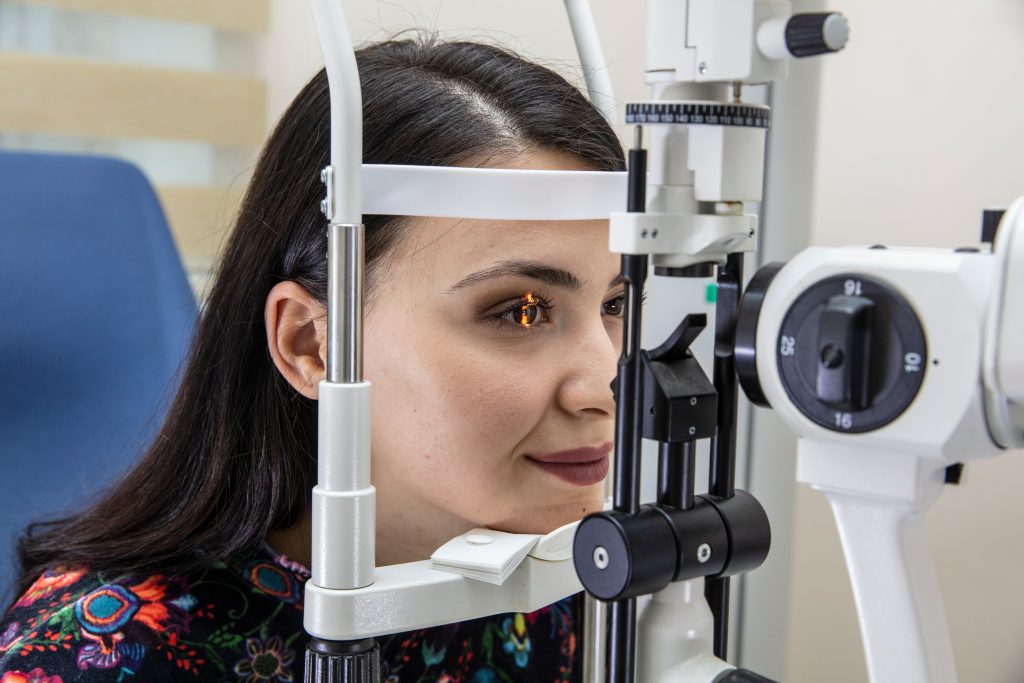
There are plentiful resources online that make it simple to compare optometrists in Reno, Nevada. Dr. Bolenbaker’s information can be found on helpful sites like healthgrades.com, where you’ll be able to get a general overview of the practice, as well as the accepted insurance providers.
A well-rounded education in optometry can indicate if a doctor has specialty training in various eye care disciplines. Dr. Bolenbaker found a passion for optometry at Washington State University. After completing over 100 hours of observation time (only 30 are required to pursue a degree), he went on to graduate from Pacific University’s College of Optometry in 2003.
While pursuing his Doctor of Optometry Degree, he was an active member of the Beta Sigma Kappa International Optometric Honor Society. Dr. Bolenbaker’s practice now offers general optometry services, but also specializes in areas like low vision, dry eye, myopia control, and orthokeratology.
From routine checkups to more advanced eye conditions, you want a doctor who’s experienced in providing high level care. The greater breadth of experience an optometrist has with treatments, the better your results are likely to be - both short and long term. It’s a good idea to ask if your doctor treats your specific condition, if you are aware you have one.
How many patients have they treated with glaucoma? Myopia? Lasik? Getting details on if they have experience with a certain condition before visiting can save you time. If you’re looking for a Reno eye doctor that specializes in several advanced treatments for you and your family, check out Dr. Bolenbaker’s services.
While the doctor of optometry is a very important factor in choosing a practice, remember that you’ll also be interacting with the front office staff and opticians. The staff should truly care about your well-being, and provide a seamless experience from check in to check out. The Visionary Eye Center staff consists of passionate Nevada eye specialists who are welcoming, knowledgeable, and caring. Our team includes experienced and energetic people whose goal is to provide the best eye care possible.
Checking out what others have to say about an optometrist provides an unfiltered glimpse into how a practice is run and what to expect on your visit. Look into the typical scheduling experience, office environment, wait times, and office staff friendliness. Another point to look for is how much time the doctor spends with patients, and their ability to inform patients on the treatments they are receiving. Visionary Eye Center prides itself on receiving great reviews from our valued patients. Check out what they have to say on our reviews page!
Choosing an eye doctor isn’t the most exciting thing, but it can make a huge impact on your ability to experience the things you love. Visionary Eye Center is a great choice for any Reno resident seeking a specialized optometry practice with the experience and care you have come to expect in a professional healthcare office. We are currently accepting new patients, so give us a call to set up an appointment.
Age-related vision issues can affect anyone over time, and may not be apparent right away. Even if you haven’t experienced vision issues during your life, some conditions can begin to surface when you’re 40 or older. At Visionary Eye Center, our Reno optometrist recommends the following tips to preserve your eye health:
After you turn 40, it’s important to receive an eye exam every year. This helps to record and track any changes that may affect your vision. If you are experiencing any of the following symptoms, we recommend consulting an optometrist to mitigate risks and provide treatment where necessary:

Like it or not, you become more susceptible to vision issues as you age, and some can be debilitating. From dry eyes, to cataracts, to macular degeneration, an experienced eye doctor can diagnose and produce a treatment plan to suit you.
Dry eye is more debilitating as you age. While it may seem common in Northern Nevada thanks to our dry climate, there may be other factors contributing to the symptoms of burning, redness and tearing. As many as 3 million women and 1.7 million men over 50 in our country are affected by the syndrome.
How does dry eye occur? Tear film dysfunction has many causes, including computer use, contact lens wear, makeup, hormone changes associated with aging and autoimmune disorders, which further increase the risk of corneal scars or infections.
Optometrists also see numerous patients with cataracts, the leading cause of blindness in the world. Cataract symptoms include a decrease in visual clarity, foggy vision, glare, and halos of light. Cataract surgery is a simple outpatient surgery and the artificial lenses placed during it will last for the rest of your lifetime.
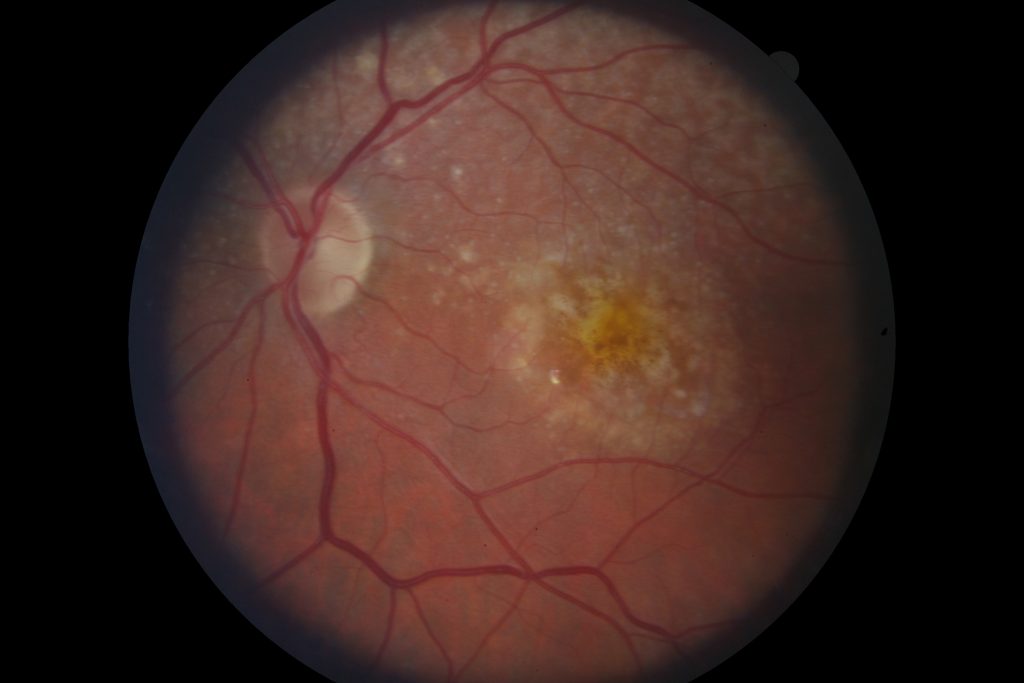
Retinal scan of dry macular degeneration
Lastly, macular degeneration is the primary culprit for blindness in adults over 50. While these patients never go completely blind from the condition alone, it certainly devastates their independence. There are two versions of macular degeneration: wet and dry. At Visionary Eye Care Center, we diagnose and manage both conditions with help from our local retinal specialists.
It turns out the advice of “don’t stare too long at the TV” is still true, thanks to our phones and other electronic devices. Recent studies show that we blink less than half as often when looking at a screen, which can lead to dryness and eye fatigue.
Our Reno family eye care experts suggest that everyone, at any age, should practice the 20-20-20 rule when using a screen. Just looking at something 20 feet away, for 20 seconds, every 20 minutes, will help reduce the dryness and eye strain of computer vision syndrome.
Using proper eye protection outdoors is also important. UV rays are harsh on your eyes in the long term. Sunglasses work wonders to protect your eyes from the elements and reduce your risks of cataracts, pterygia and macular degeneration.
Lastly, a balanced diet that is rich in Omega-3s, Vitamins C and E, and zinc, can help combat age-related eye disease. These supplements are often used to combat the effects of dry eye and slow the progression of dry macular degeneration.
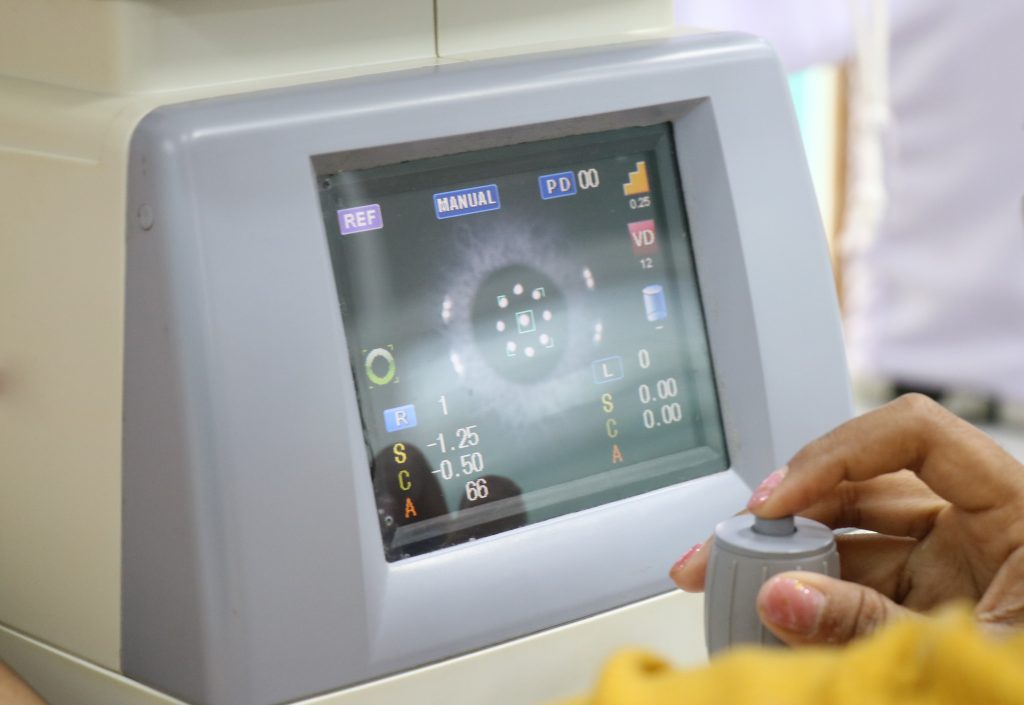
All in all, simple changes to your lifestyle and new habits will help prolong your eye health. If you’re experiencing changes in your vision or have questions about how to protect your eyes, make an appointment at our Reno optometrist office today.
Request an Appointment at Visionary Eye Center
March is National Save Your Vision Month, so what better time to schedule your annual eye exam. With Spring Break quickly approaching, it’s the perfect time for the whole family to see an optometrist in Reno. Dr. Bolenbaker and his team at the Visionary Eye Center look forward to meeting you and your family and taking care of your eye vision needs. As the best eye doctor in Reno, we offer pediatric eye care services to ensure that your child is developing proper depth perception, essential binocular skills and more.

Preventative eye care is important because eyesight is one of the most important senses. Eighty percent of what we perceive is because of our eyesight, so protecting your eyes will reduce the chance of blindness, vision loss, and long term eye diseases like cataracts and glaucoma. Vision disability is one of the top 10 disabilities among adults 18 years and older, and is one of the most prevalent disabling conditions among children. Because of our aging population, the CDC reports that the number of visually impaired individuals in the United States will double by 2030 and triple by 2050.
Other reasons to see an eye doctor in Reno include getting assistance with any decreased vision, eye pain, or double vision issues. We strongly encourage people to take care of their vision health, and the first step to it is making sure to schedule an annual eye exam. Visionary Eye Center can offer these important services in addition to exams:
Take care of your eyes and correct mild cases of farsightedness and presbyopia by beginning the safe processes of orthokeratology, myopia control, and more at our center today. The Lasik procedure is a great refractive practice to help with easily fixing any vision issues too.
Our Reno family eye care center is also one of the only low vision specialty clinics around, and there’s nothing more enriching than helping the partially sighted regain their independence.

We want the Reno community to be well informed on the best eye health decisions all year round. We offer several services for your eye health, whether it’s dry eye care, contact lenses, or myopia control. Don’t put off something as important as preventative eye care. The team at Visionary Eye Center are Reno optometrists with plenty of experience. Click here to schedule an appointment today. Please don’t hesitate to contact us with any general inquiries or concerns, and we look forward to meeting you!
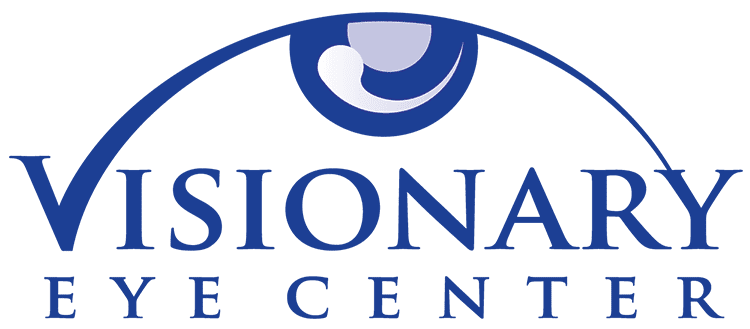 775.827.1100info@visionaryeyecenter.com8175 South Virginia Street Suite B-900
775.827.1100info@visionaryeyecenter.com8175 South Virginia Street Suite B-900